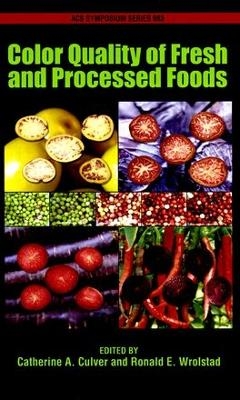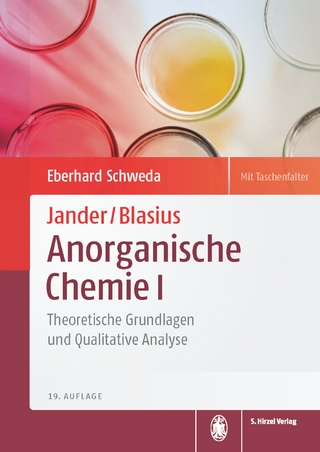
Color Quality of Fresh and Processed Foods
Oxford University Press Inc (Verlag)
978-0-8412-7419-8 (ISBN)
- Keine Verlagsinformationen verfügbar
- Artikel merken
Color is a critical measure of quality in foods and beverages. Researchers and technical personnel in quality assurance and product development need appropriate objective methods for measuring color. This book contains chapters by scientists from throughout the world with expertise on the pigment and color stability of many different commodities. While a broad range of foods are represented, there is particular emphasis on fruits and vegetables and beverages. There
is heightened interest in the natural food pigments today because of their health benefits and roles in reducing the risk of coronary heart disease, cancer and other diseases. However, research on the health benefits of natural colorants is not the subject of this book, rather the focus is on color
quality- how it can be optimized and how it is appropriately measured.
The book opens with a section on color measurement covering the basic principles and practical aspects of color measurement. Sixteen chapters are devoted to fruits, vegetables and beverages. The perspective of plant breeders is given along with that of academic and industrial scientists. Food colorants are given intense scrutiny when it comes to regulation, and there is considerable variation from country to country with respect to both basic principles and specific rules for use and labeling
of colorants. The six chapters in the final section on regulatory aspects give a very comprehensive update on colorant regulations in the USA, Europe, Central and South America and Asia. The viewpoint from regulatory agencies is given along with that from manufacturers and users of food colorants.
This section provides a very clear picture of food colorant regulations at the present time. Much of this information is also relevant to other food ingredients. The book contains a number of color plates that were selected to make for a clearer presentation of the author's concepts.
Ronald E. Wrolstad earned his B.S. in Food Technology at Oregon State University and his Ph.D. in Agricultural Chemistry at the University of California at Davis. He was a faculty member of Oregon State University's Food Science and Technology Department for 40 years before retiring in 2004. He is author or co-author of 169 research publications. He is a Fellow of both IFT and ACS's Division of Agricultural and Food Chemistry. Catherine A. Culver holds a Ph.D. in Food Science from North Carolina State University. She has seventeen years of experience in the food industry, including seven years as an applied enzymologist/biochemist with Kraft General Foods and seven years as a color specialist with Pepsi-Cola.
1. Communicating Food Color Effectively with Physical Color Standards ; 2. Color Measurement Techniques for Food Products ; 3. Color Quality of Fresh and Processed Strawberries ; 4. Color Quality of Maraschino Cherries ; 5. Color Quality of Cranberry Products ; 6. Anthocyanin Colors from Fruits and Vegetables ; 7. Betalain Pigments and Color Quality ; 8. Achieving Phytonutrient Enhancement in Potato by Breeding for Increased Pigment ; 9. Expanding the Potato Industry: Exotic Colored-Fleshed Tubers ; 10. Color Quality of Tomato Products ; 11. Stability of Carotenoids in Vegetables, Fruits, Functional Foods and Dietary Supplements with Particular Reference to trans-cis-Isomerization ; 12. Role of Color and Pigments in Breeding, Genetics, and Nutritional Improvement of Carrots ; 13. The Chemistry of Red Wine Color ; 14. Measuring Color in Wine ; 15. Assessing Color Quality of Beer ; 16. Pigment Composition and Stability in Berry Juices and Wines ; 17. Non-Enzymatic Browning in Orange Juice and Mango Puree ; 18. Global Color Quality of Beverages Utilizing Caramel Color ; 19. Color Quality of Salmon ; 20. Coloring Technology for Surimi Seafood ; 21. Color Quality in Meat ; 22. Color Quality in Olive Products ; 23. Color Quality in Red Pepper (Capsicum annuum, L.) and Derived Prodcuts ; 24. Avocado Oil-The Color of Quality ; 25. Sweet Whey Powder Color ; 26. Understanding Colors in Emulsions ; 27. Polyphenols, Polyphenol Oxidase and Discoloration of Barley-Based Food Products ; 28. Regulatory Aspects of Colorants-Regulations, Regulations, Regulations in the USA ; 29. Food Color Regulations: A Latin American Perspective ; 30. European Perspective on Sudan Dyes and the Structure of Food Colour Legislation ; 31. Color Regulations in Asia ; 32. Impact of Color Regulations on a Global Beverage Company ; 33. Color Regulations- Challenges in the Global Regulatory Environment
| Erscheint lt. Verlag | 26.6.2008 |
|---|---|
| Reihe/Serie | ACS Symposium Series ; 983 |
| Zusatzinfo | 168 line illustrations |
| Verlagsort | New York |
| Sprache | englisch |
| Maße | 156 x 236 mm |
| Gewicht | 915 g |
| Themenwelt | Naturwissenschaften ► Chemie ► Analytische Chemie |
| Naturwissenschaften ► Chemie ► Anorganische Chemie | |
| Naturwissenschaften ► Chemie ► Physikalische Chemie | |
| ISBN-10 | 0-8412-7419-3 / 0841274193 |
| ISBN-13 | 978-0-8412-7419-8 / 9780841274198 |
| Zustand | Neuware |
| Haben Sie eine Frage zum Produkt? |
aus dem Bereich


